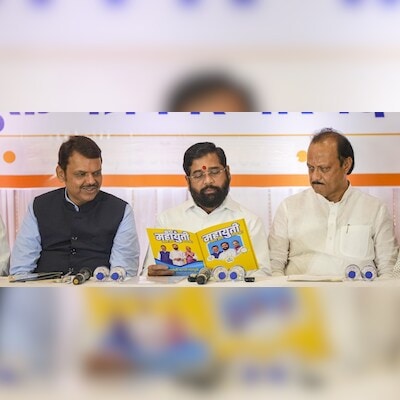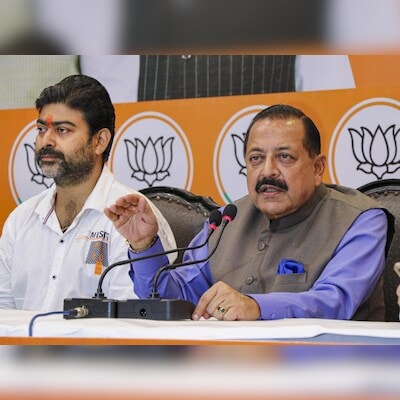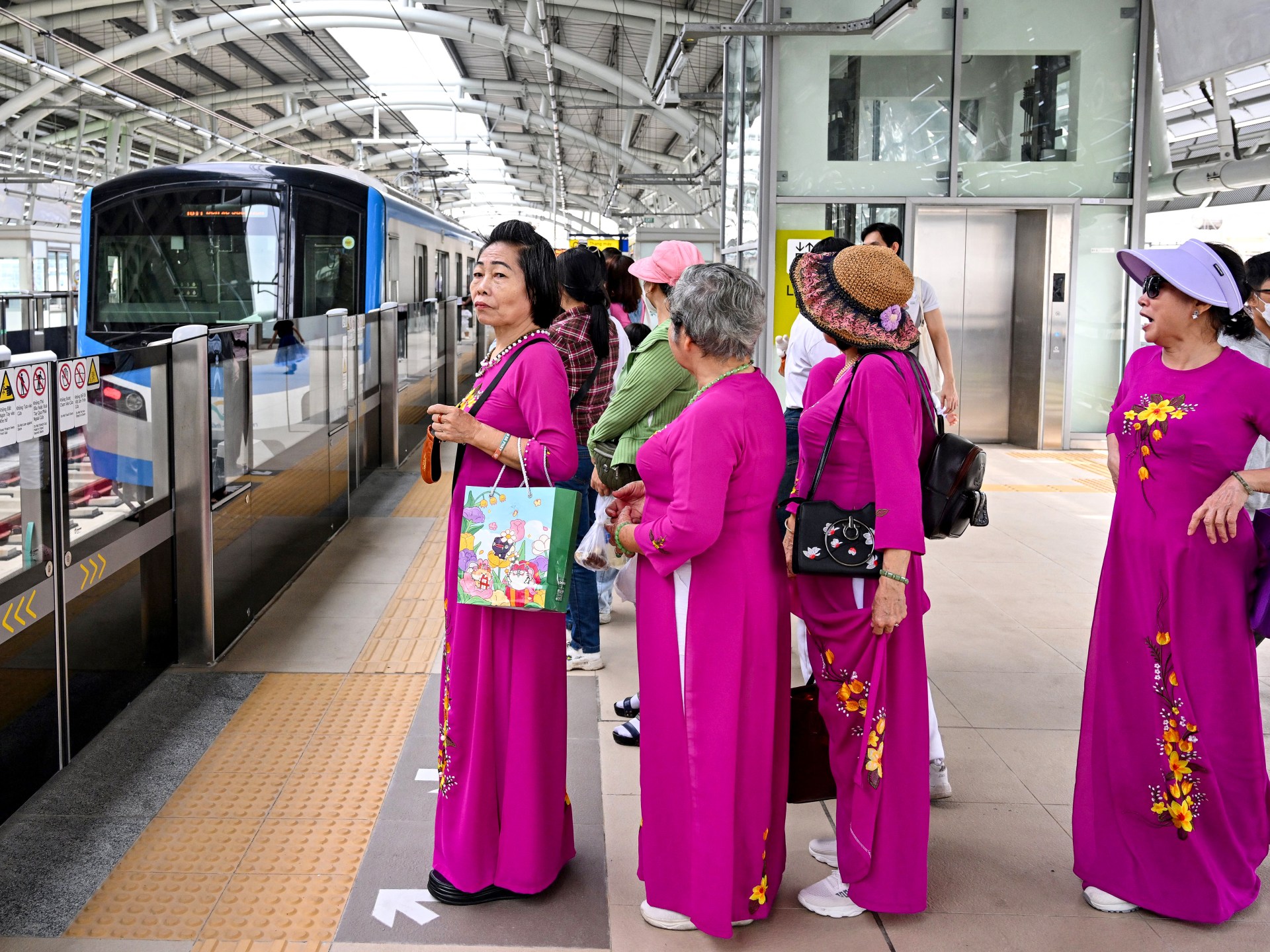)
Haryana CM Nayab Singh Saini (left) faces challenge from Bhupinder Singh Hooda (right) and Udai Bhan-led Congress in the upcoming state polls
Political observers are tracking an election strategy the Bharatiya Janata Party (BJP) is following in Haryana: It’s soft on Kumari Selja, the Congress party’s main Dalit leader, and attacking its Jat face Bhupender Singh Hooda. After the Hooda camp got an upper hand over Selja when the Congress selected election candidates, the BJP accused its rival of discriminating against Dalits. Meanwhile, Congress responded politically to this strategy by getting BJP leader Ashok Tanwar to return to the Grand Old Party after 5 years on Thursday, which was the last day of campaigning for the Haryana elections. Tanwar, who is a Dalit, is a former MP and ex-state president of Congress.
Click here to connect with us on WhatsApp
According to such observers the BJP and the Congress realise the importance of Dalits, who comprise around 21 per cent of the state’s population and are crucial for any party wanting to win elections in Haryana.
Since 2014, the BJP in Haryana has wooed every community except Jats. It won the 2014 and 2019 assembly elections after creating a Jat vs non-Jat binary. Several Dalits helped the party to strengthen its non-Jat coalition, which already had the support of a good chunk of Other Backward Classes (OBCs), Punjabi Khatris, and upper castes.
The question is whether Dalits vote alike in elections. Some analysts believe Dalits will support the Congress but others think that a significant proportion of the community can be considered as a core voter base of BJP.
To some extent, how Haryana’s Dalits vote can be understood by examining sub-castes in the community.
Dalits in Haryana
The Chamars are the most populous sub-caste within the Dalits in Haryana and comprise almost 50 per cent of the total scheduled caste (SC) population. “The community largely resides in the state’s rural belt and unlike other sub-caste groups has decent landholdings as well. Currently, many community members, especially those residing in villages, work as labourers in agricultural fields,” said Prakash Chander, a PhD scholar at Jawaharlal Nehru University in Delhi and who has worked for the rights of Dalits.
Chamars are considered a Congress core vote bank and they align well with Jats (another support base of the party), according to Chander. Over the years, the two communities have voted for the Congress. Selja, a Lok Sabha member, is regarded as the tallest Chamar politician in Haryana.
Haryana’s second most dominant Dalit sub-caste is the Valmiki community, which comprises around 25-30 per cent of the state’s SC population.
Valmikis live in urban and rural areas and many work as sanitation workers or in related jobs. According to analysts, the community largely votes for the BJP, which has given four tickets to the community. The Congress has given two. “The saffron party (the BJP) made inroads into the community by penetrating municipal corporation-led civic committees. Such civic committees, especially those related to sanitation workers, have a good presence of Valmikis,” said Chander.
Third are the Dhanaks, who mostly live in cities and comprise a little more than 10 per cent of the total SC population of Haryana. Community members have worked as labourers in food grain markets. Dhanaks come under the deprived scheduled castes (DSC) category in Haryana. “The community is underprivileged, especially when compared to other SC sub-caste groups like Chamars,” he said.
“With BJP’s better presence than Congress in urban areas, Dhanaks were attracted to the former in the last couple of elections. However, things have started to change, and BJP will find it very difficult to keep Dhanaks in its fold,” said Surendra Bhaderwal, a political consultant.
Other Dalit sub-castes like Doms, Pasis, Mazhabi Sikhs, Khatiks, Bazigars, and Saperas are too few to influence electoral politics.
Caste equations
The Congress and the BJP have fielded 17 Dalit candidates each but only in SC reserved seats (the state has 90 assembly seats). According to estimates, the BJP has given eight tickets to Chamar candidates, four to Valmikis and five to other Dalit sub-castes. The Congress has given 12 tickets to Chamar candidates, two to Valmikis, and three to others. This reflects which sub-castes both parties are planning to consolidate behind them more.
The Congress has had a Dalit-Jat combo strategy in Haryana for almost two decades. It typically appoints a Dalit leader as its state president and makes a Jat face its Congress legislature party (CLP) leader or Chief Minister (CM). Some notable examples are Bhupinder Singh Hooda (CLP leader) and Udai Bhan (state president), Kiran Choudhary (CLP leader) and Ashok Tanwar (state president), and Hooda (CM) and Phool Chand Mullana (state president).
The Dalit population in Haryana is not equally distributed. In Fatehabad, Sirsa and Ambala districts, the community comprises more than one-fourth of the population. In Nuh, Faridabad and Gurugram, the community is sparse.
The Congress has been able to bring together Jats, Chamars and Muslims but not the entire Dalit community into its fold. The only time almost all Dalit communities voted for a single party in an assembly election was during Indian National Lok Dal (INLD) founder Devi Lal tenure as Chief Minister. Experts believe that going by the 2024 Lok Sabha polls result, it seems that Dalits are attracted to the Congress but a trend is not certain.
“The BJP is trying its best to make big inroads, and Valmikis will most likely vote for the saffron outfit. Also, the alliance between INLD & Bahujan Samaj party (BSP) is likely to garner some Dalit votes, especially for the latter, as BSP has some presence in the state, and along with INLD, it becomes a formidable player on at least a few seats like Yamunanagar and Ellenabad,” said Bhaderwal.
“The other Jat-Dalit alliance Jannayak Janta Party (JJP) and Azad Samaj Party (ASP) of is unlikely to make much impact as presently, JJP’s credibility is at an all-time low and ASP is a new entrant in Haryana politics. However, both Dalit parties (BSP and ASP) won’t make much impact, but whatever SC votes they will get are likely to come from members belonging to the Chamar sub-caste.”
“Supreme Court allowing states to create sub-classifications within the SC and ST categories has also been taken positively by the non-dominant Dalit sub-caste groups as many of them in Haryana feel that the maximum amount of reservation benefits are being availed disproportionately by the Chamars,” said Chander.
In the 2024 Lok Sabha elections, the Congress and the BJP won five seats each in the state. But the Congress won the two SC reserved seats: Ambala and Sirsa. In the 2019 Assembly polls, the BJP won more seats than Congress and formed the government in alliance with JJP. However, the Congress gained against the BJP in SC reserved constituencies, winning seven out of the 17 such seats. The BJP secured five, while JJP and independents won four and one respectively.
First Published: Oct 04 2024 | 8:58 PM IST














Leave a Reply